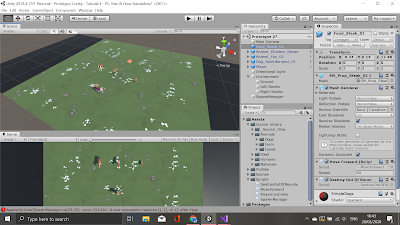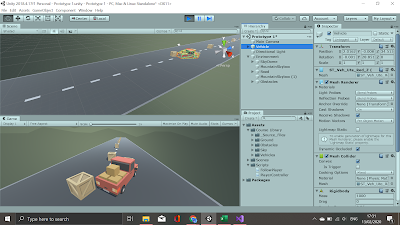Unity Tutorial 06
Lesson 3.1 - Jump Force
This tutorial was relatively easy to follow, however I encountered some coding problems here. For some reason, when coding the collision in order to identify when the player is on the ground, the player only registers as being on the ground at the start of the jump and when the player lands it doesn't register as being on the ground anymore. I tried to fix this and put in my code exactly as the tutorial and I can't exactly figure out what's wrong so the player is stuck that way for now. I also had an issue where the obstacles would fall through the map and into the void and I am unsure of how to fix this. However, I did learn handy code such as how to prevent the player from double jumping and also how to move a whole scene left.
Screenshot of my Unity project
Source: My laptop
Lesson 3.2 - Make the World Whiz
The coding to make the background repeat and seamless worked flawlessly and is fully functional! This is really useful in many elements but especially platformer style games. However, when the player hits an obstacle it does not register, so the Game Over script along with the stop scrolling does not work- but the code is implemented so if the player did register being hit then the code should work no problem.
Screenshot of my Unity project
Source: My laptop
Lesson 3.3 - Don't Just Stand There
This tutorial was very useful as it explored more in depth character animation and how to add them to the character. I learned how to navigate the animator component, and how to adjust values such as the speed of the running animation in order to make it match the speed the background was moving. Again, I had trouble with animating the dead player animation as the player does not register if it hit an obstacle, but the running and jumping animations worked fine!
Player running animation
Source: My Laptop



















